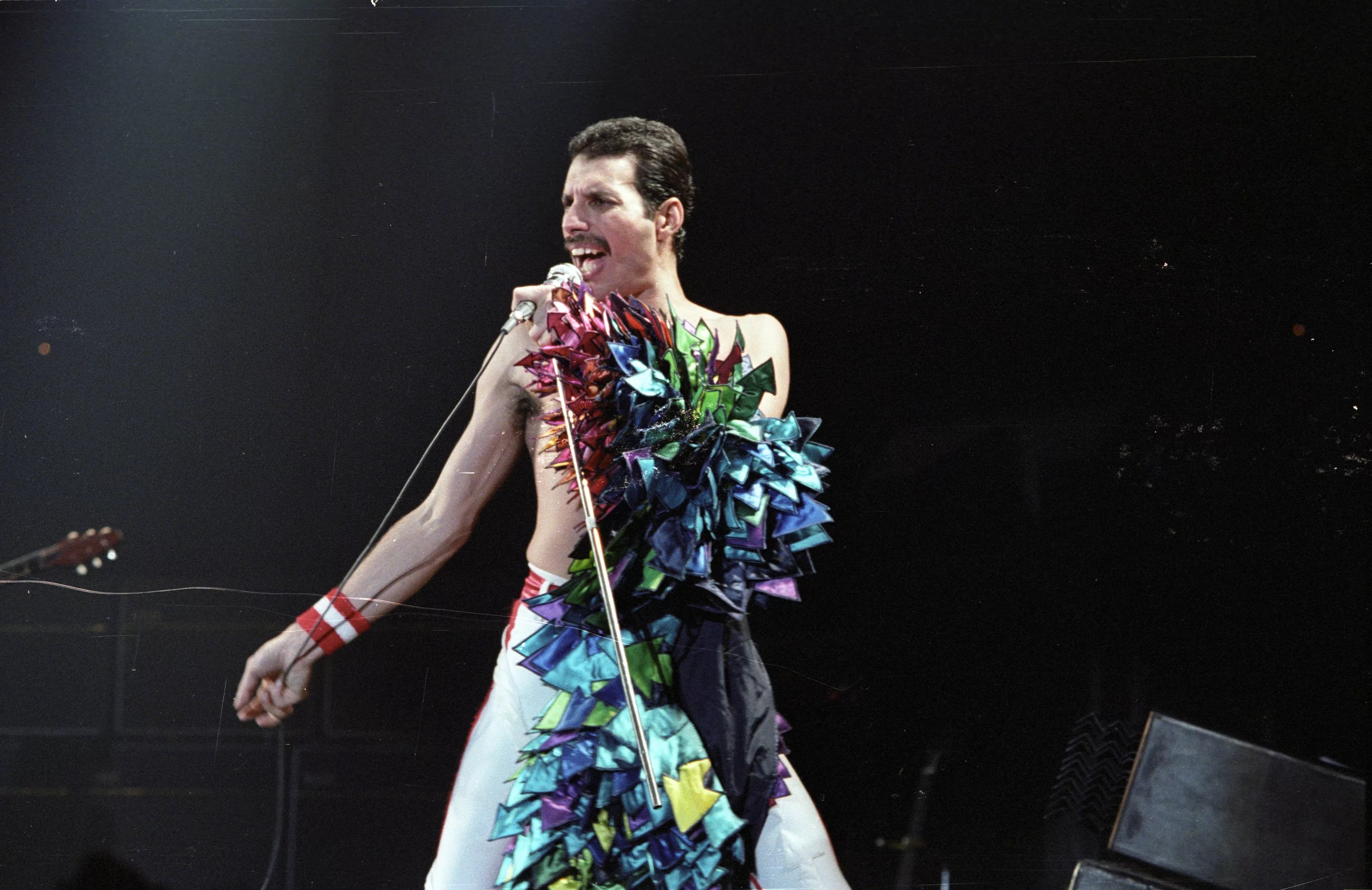
Ben Perea

Audio By Carbonatix
About four years ago, Ben Perea rediscovered a box of concert photographs he had taken in the ’70s and ’80s. He hadn’t looked at them in decades, but he could easily identify the faces: Freddie Mercury, Eddie Van Halen, Mick Jagger, Rob Halford, Pete Townshend. Even more impressive, the film images were crisp and in focus – a rarity when it came to capturing the most energetic rock musicians at the genre’s peak. Memories of raucous concerts and camping out overnight for tickets poured from each shot.
Perea debuted a selection of the photographs last November, with a show at D’art Gallery titled Rock Legends: Denver’s Untold Moments in Rock History. At the time, he said it was only scratching the surface: “I could do an exhibit of just Queen if I wanted to,” he revealed. And now, he is.
Queen Uncovered: Denver’s Untold Moments in Rock History will include sixteen photos of Queen’s final show in Denver when it opens May 25 at D’Art. During a May 31 reception, Perea will be on hand to answer questions and share memories about the works.
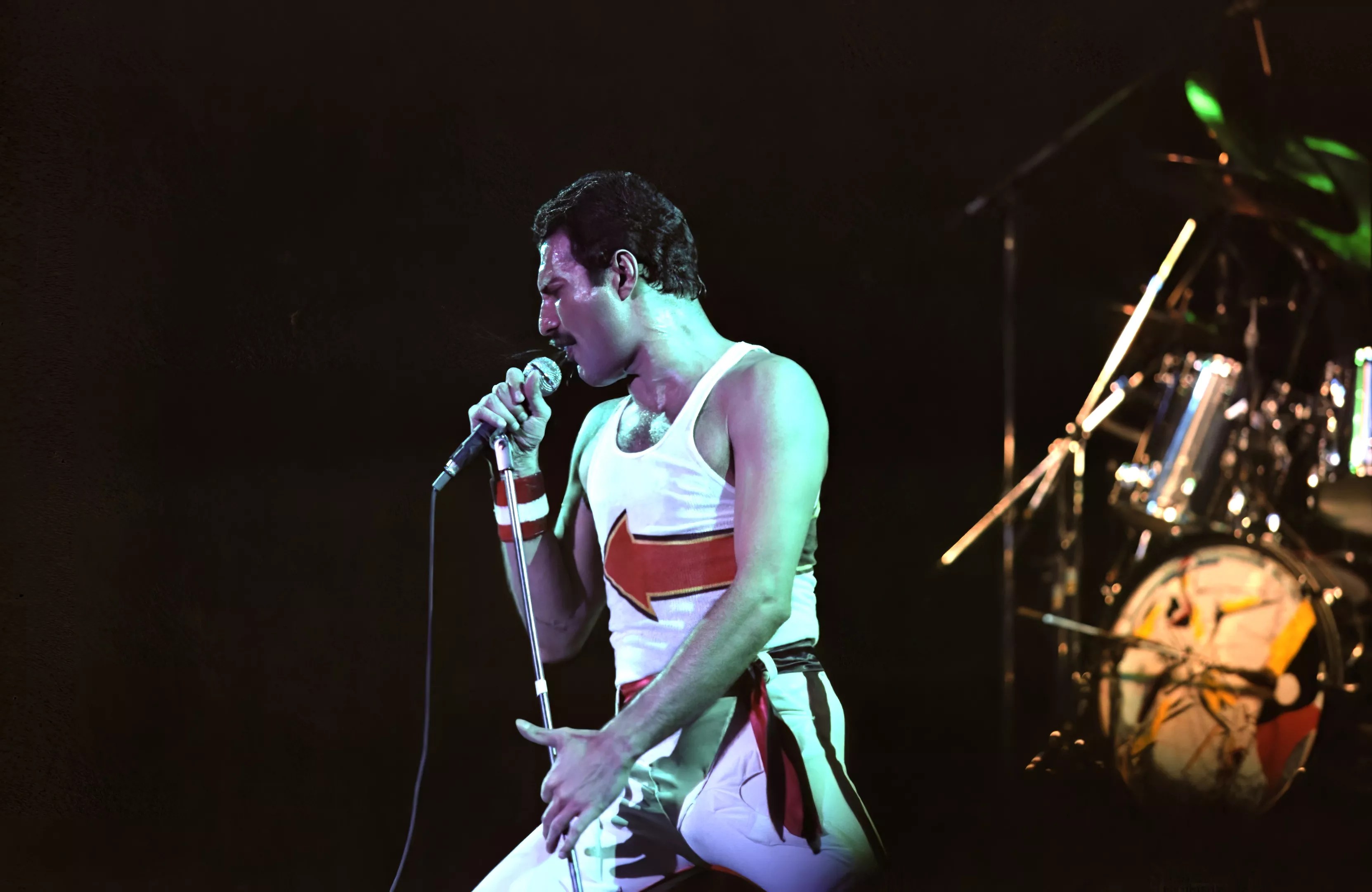
The photos are impressive not just for their subjects, but for their crisp imagery.
Ben Perea
“I got a lot of really good feedback,” Perea says of the last show, which showcased photos of such bands as the Rolling Stones, Judas Priest and AC/DC with their corresponding ticket stubs while classic rock played over the speakers. “Everyone was just amazed by the Queen photos…there was an overwhelming response for Queen.”
Queen only performed in Denver twice, Perea notes. The first show happened on April 16, 1974, at Regis Fieldhouse; the band didn’t return until August 30, 1982, to play the old McNichols Arena for its Hot Space tour, which is what the exhibit will cover. “Tickets were $13,” Perea marvels. “It cost more money to buy the film and have it developed!”
The show would be a part of Queen’s last run in the United States: While the band’s popularity was still buzzing in other countries, American album sales had declined. And in the midst of the buttoned-up Reagan era, controversy swirled around Queen’s proudly queer – and very unbuttoned – music videos, specifically 1982’s “Body Language” and later, 1984’s “I Want to Break Free.” MTV refused to air them, citing nudity for “Body Language” (though there isn’t any explicitly), and the members’ use of drag for “I Want to Break Free.”
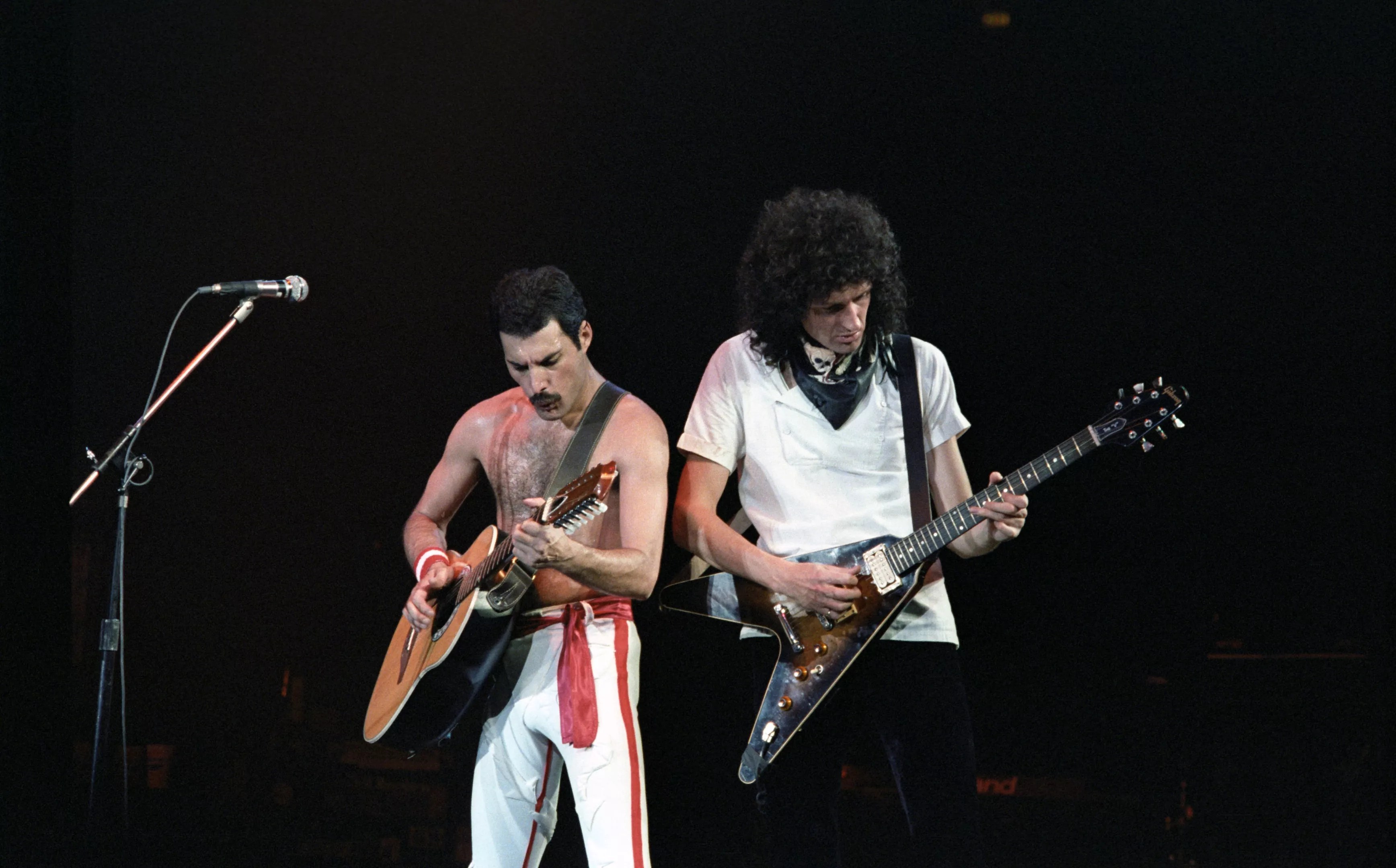
Freddie Mercury and Brian May.
Ben Perea
“I remember being on the promo tour [for ‘I Want to Break Free’] in the Midwest of America and people’s faces turning ashen,” guitarist Brian May told NPR in 2010. “And they would say, ‘No, we can’t play this. We can’t possibly play this. You know, it looks homosexual.’ … I know that it really damaged our sort of whole relationship with certainly radio in this country and probably the public, as well.”
“They kind of boycotted coming to the U.S. after that,” Perea remembers. It makes his photos all the more special: Because Perea was bringing his camera as a spectator rather than a press photographer, he was able to get shots that others would completely miss. “If you’re a press photographer, you’re in the press pit, and you must leave after the third or fourth song,” he says. “Meanwhile, I got the encore at the very end of the show. … Freddie Mercury had a bouquet of flowers and walked to the edge of the stage, and threw all the flowers out into the audience. So I photographed him with the bouquet of flowers leaving his hands. You don’t get those photos if you’re in a press pit.”
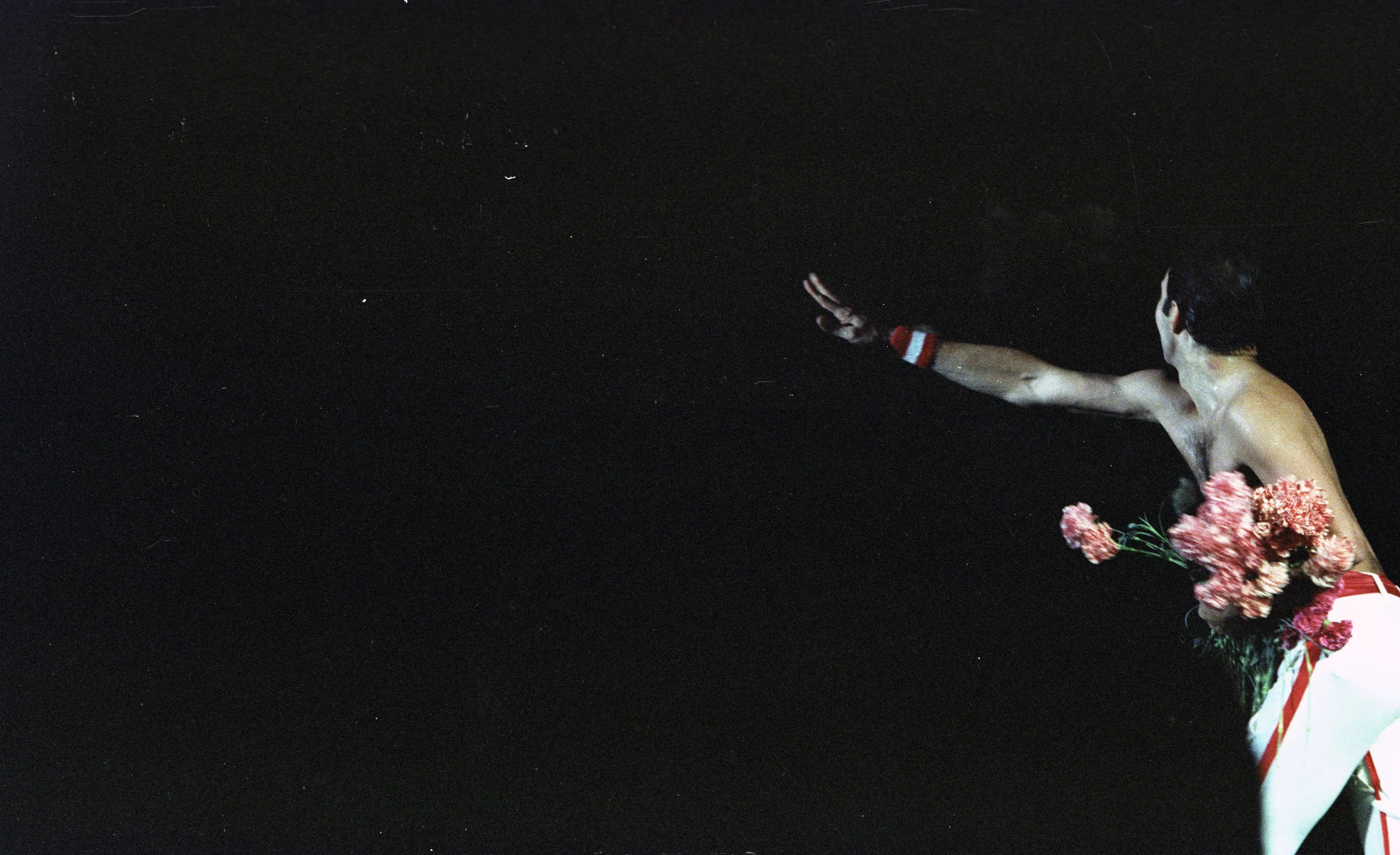
Freddie Mercury throws a bouquet of flowers to his fans.
Ben Perea
The images show Mercury’s unbridled energy, with such detail that you can even see his spit flying toward the mic. Even though he wasn’t a major Queen fan – he was into heavier rock – Perea had camped out for tickets for the concert. Back then, he says, it was a standard method to ensure you’d get a good seat. “I slept out two nights, three days waiting in the parking lot to get tickets for that show,” he recalls. “When you camped out for tickets, it was like a party. I mean, it was really fun. People would come over after work, hang out, drink some beers, roll a doobie and just talk and drink and play Queen music all night long. That was the fun thing about sleeping out.”
And it was definitely worth the effort. At the time, Queen was shaping a new era of set design, bringing light panels to the stage, a precursor to the intricate screens and light shows you’ll see surrounding musicians today. At the exhibit, you can see the lights aglow in a photo of the band performing “Bohemian Rhapsody,” which was just the song Perea hoped to hear that night.
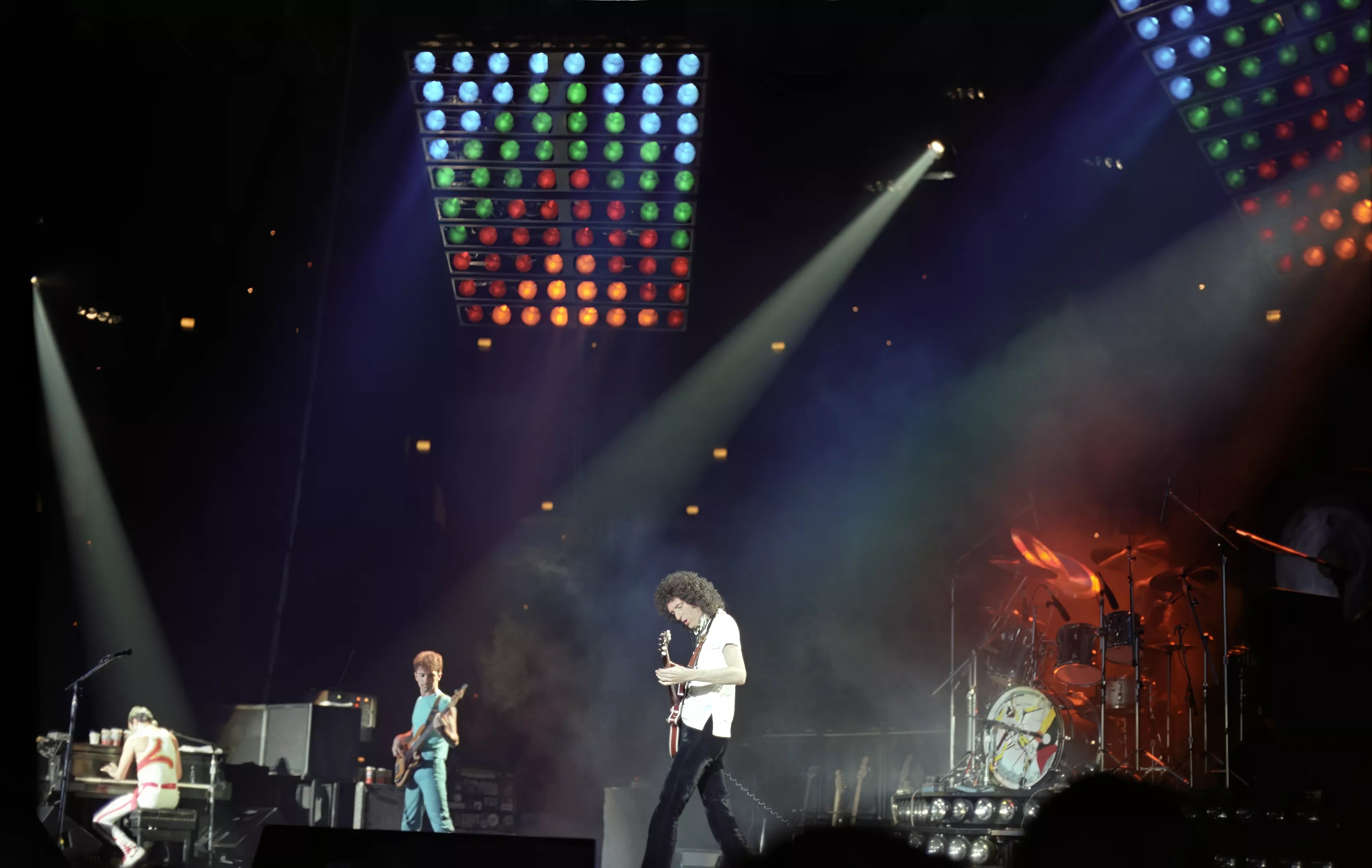
The band brought walls of light.
Ben Perea
“They were ginormous,” Perea recalls of the light effects. “They were multi-colored and giant, like twenty feet by thirty feet. There were four of them, and they were on hydraulics. They would be all the way up and just facing downwards, and then they would turn the hydraulics on, and then it would tilt them to a 45-degree angle, and then they would change the colors, and then move those panels just randomly throughout the show.”
That wasn’t the only unique aspect: “They also did three wardrobe changes,” Perea remembers. “So I have all three of their wardrobe changes throughout the whole show.” (One of those wardrobe changes, of course, simply involved Mercury finally taking his tank top off.)
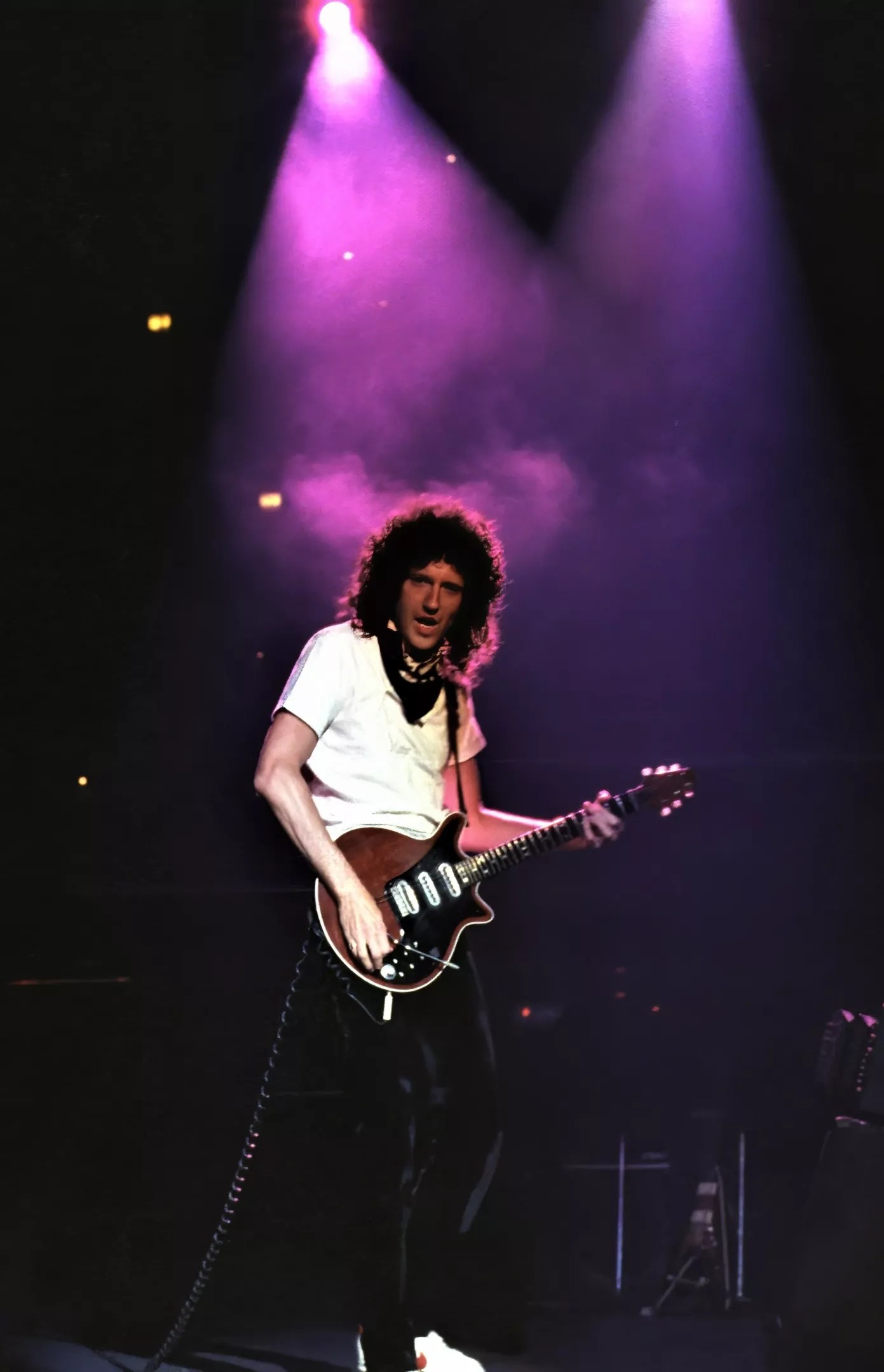
Brian May happened to look right at Ben Perea when he snapped this photo.
Ben Perea
Perea brought two rolls of film with him that night, and developed 47 images. It was tough deciding which ones to include in the exhibit, but there were several obvious choices, such as a gorgeous, enigmatic image of Brian May surrounded by purple smoke. It was one of those dream shots photographers always hope to capture, and Perea can still remember the feeling. “The lights dimmed and then turned blue and purple, it’s kind of hazy. There was no spotlight at that point in time, so I’m looking at him through my lens, and he glances over and looks right at me,” he recalls. “And I click the picture and I’m like, ‘Yes!'”
It was a trip to study all of the photographs in preparation for the show. While he had used some Queen photos in the first exhibit, he says that “for most of these photos in this Queen exhibit, I hadn’t seen them in forty years.” To make the selections, he notes that “I’m looking at which ones have more action and facial features.”
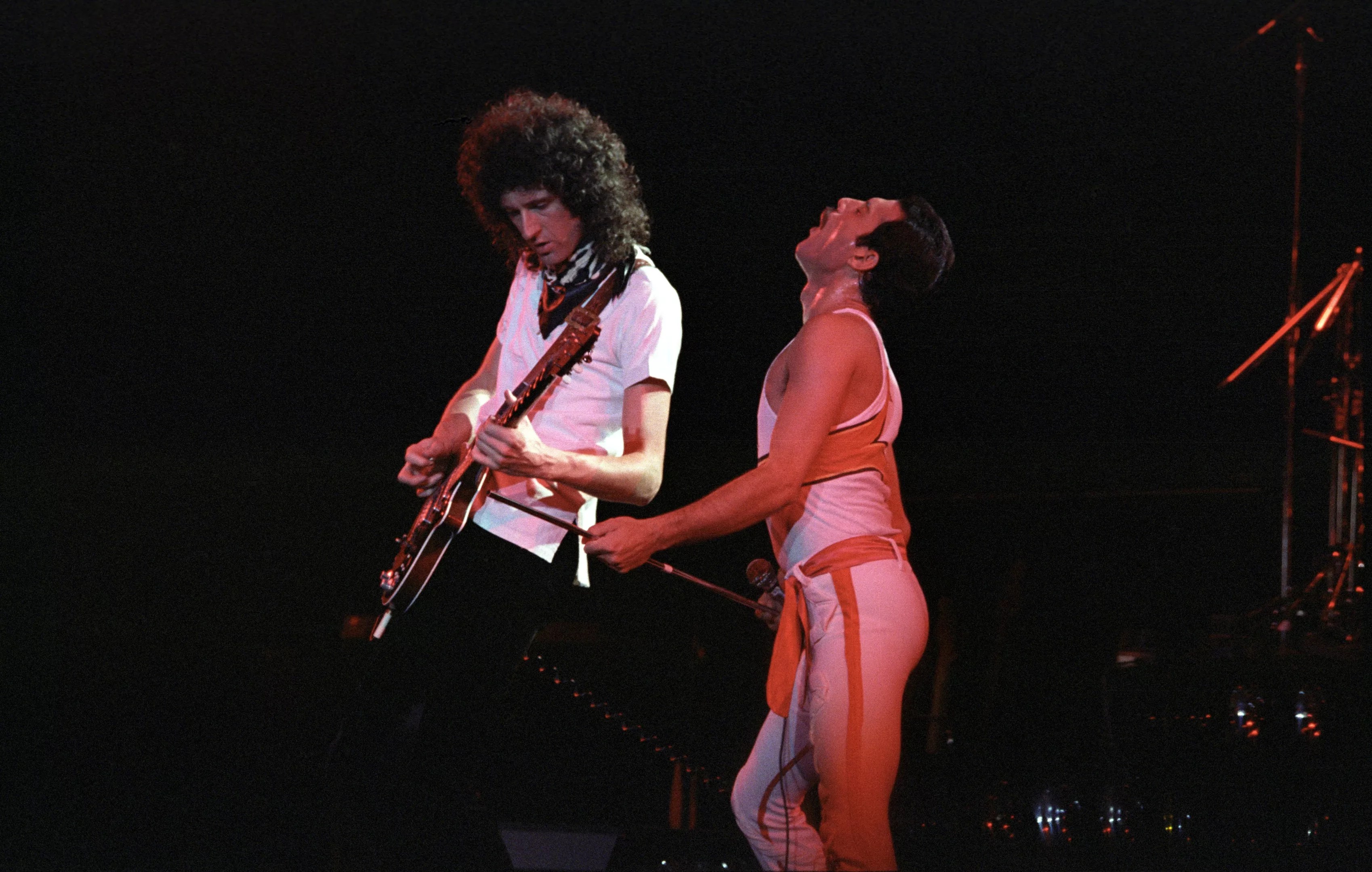
A reception for the show will be held on May 31.
Ben Perea
All of them surge with the force of the performers, whether it’s Mercury stripping off a flashy rainbow jacket, which hangs from one arm while he sings, or bowing his head back as May clearly shreds on guitar. It almost makes viewers wonder just what notes he was playing, and it’s impossible not to absorb the passionate response to music that emanates from Mercury’s posture.
The liveliness of the singer, who passed in 1991 from AIDs, was on display from the beginning of the show to the end, when he threw the bouquet of flowers to his fans. “That’s one thing that Freddie did: He engaged with the crowd all the time,” Perea recalls.
At one point, Perea locked eyes with Freddie Mercury, just as he did earlier with Brian May. He got the shot. “It was just so exciting,” he recalls, “to have a rock icon look at you out of 20,000 people – they’re seeing you.”
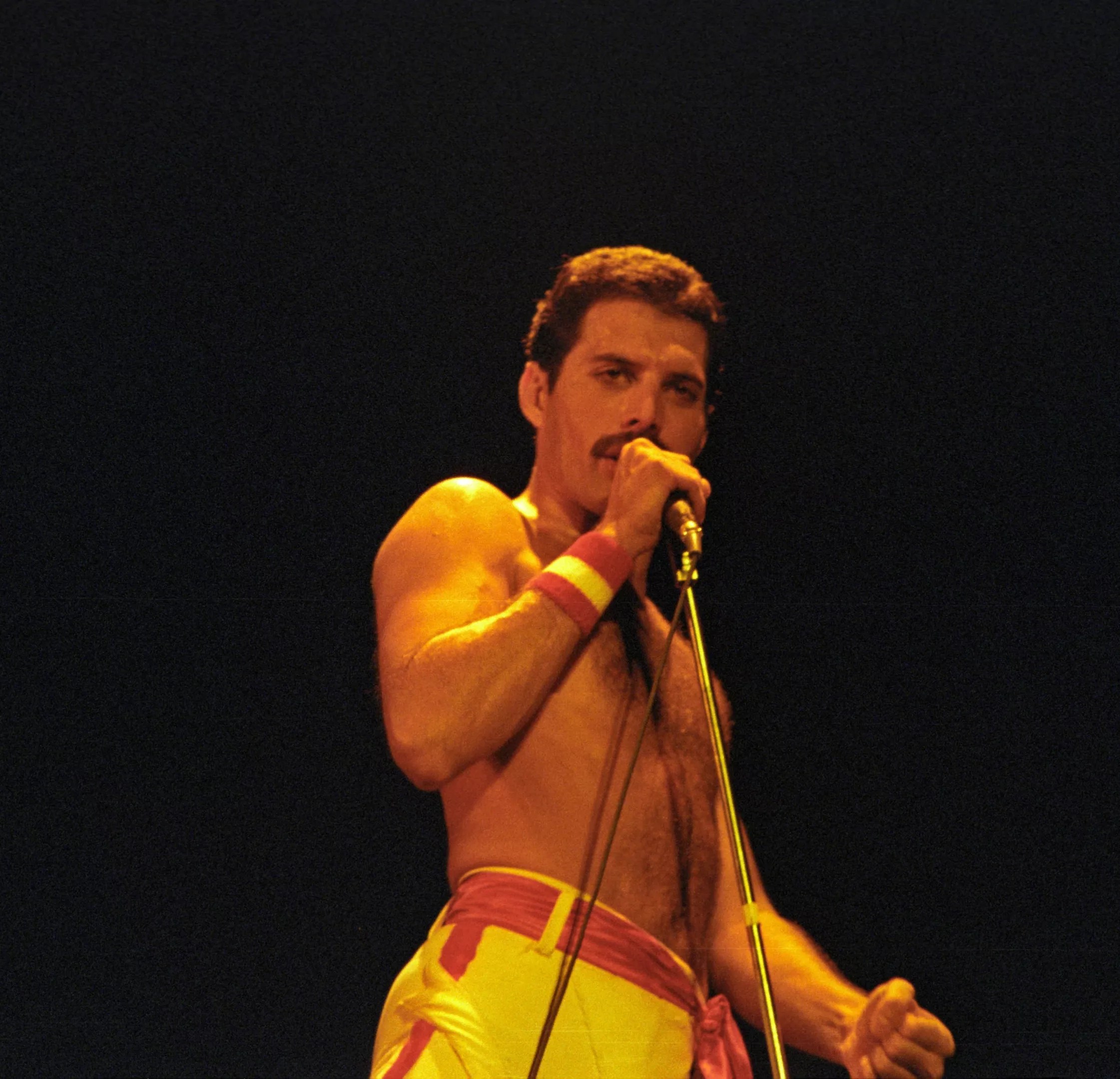
Part of Mercury’s wardrobe change just meant going topless.
Ben Perea
He hopes those who come to the show can get a bit of that feeling, too.
“For the young crowd, I really am excited for them to see these photos of Freddie Mercury when he was healthy, and just ripping the microphone, just ruling the stage,” he says. “And I really want people that are of my age, that actually saw those tours, so they can feel and revisit that time of their lives and experience the music again.”
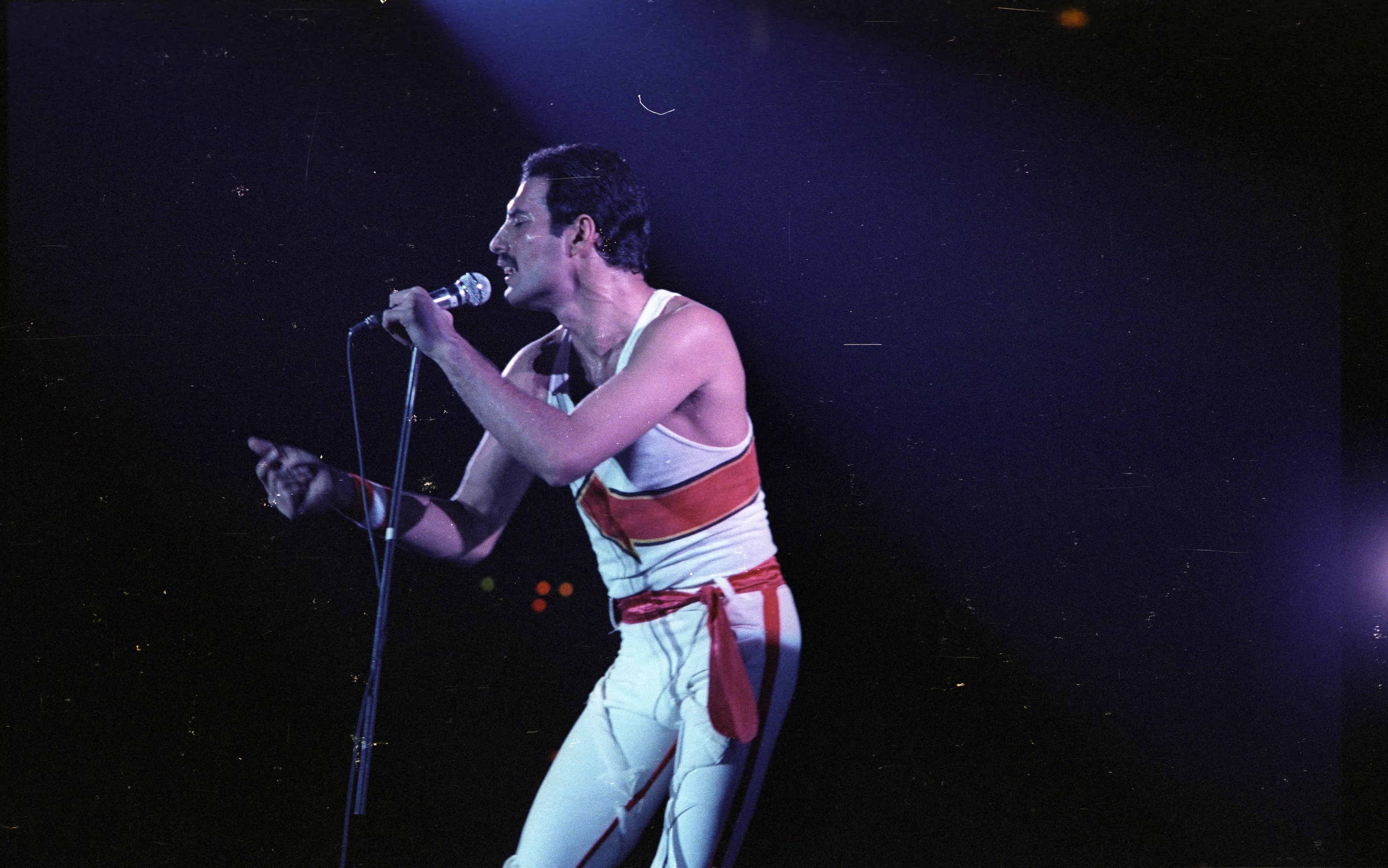
The photos will be shown at D’art in Denver.
Ben Perea
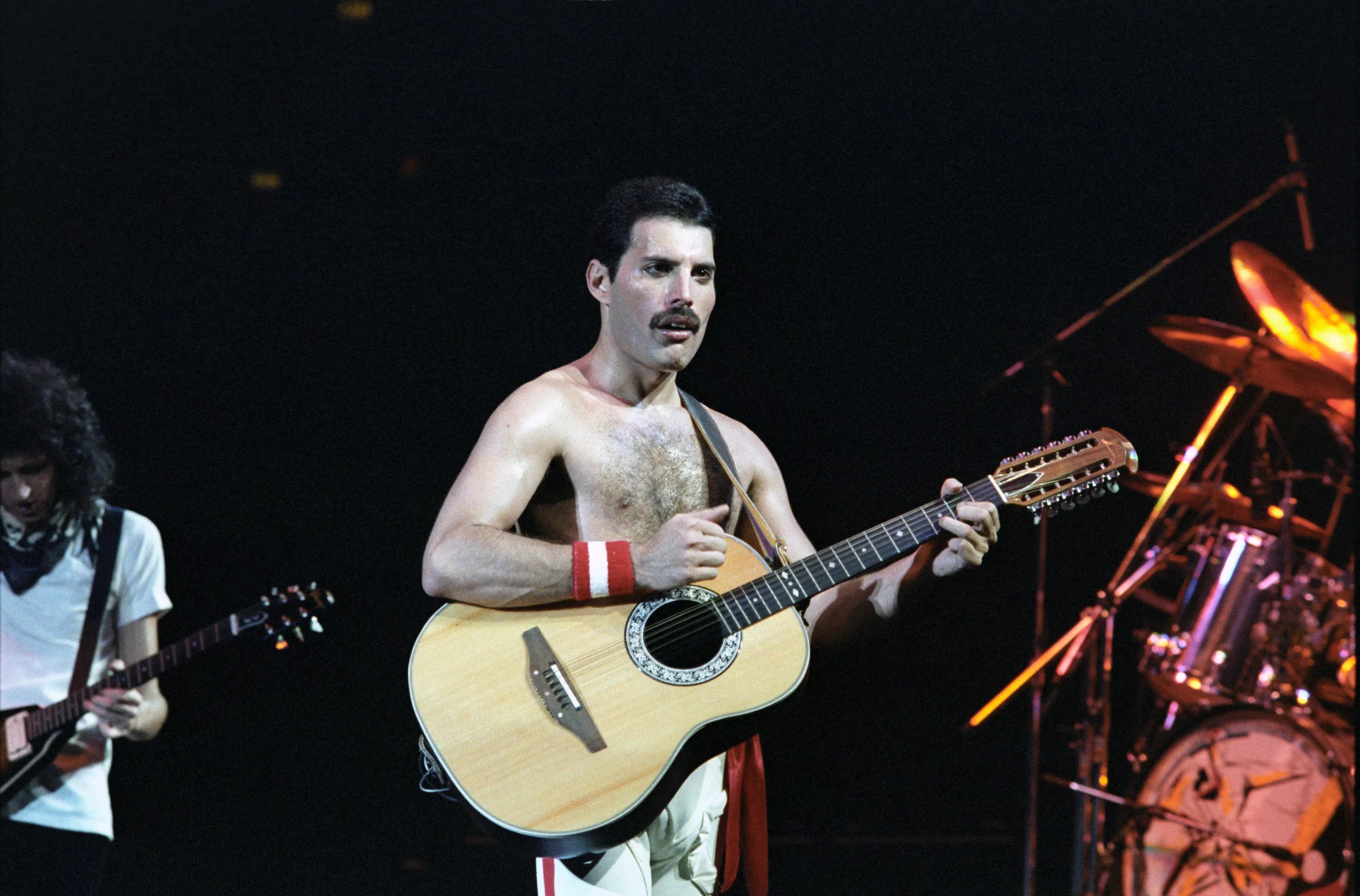
The photos show Queen at its heyday.
Ben Perea
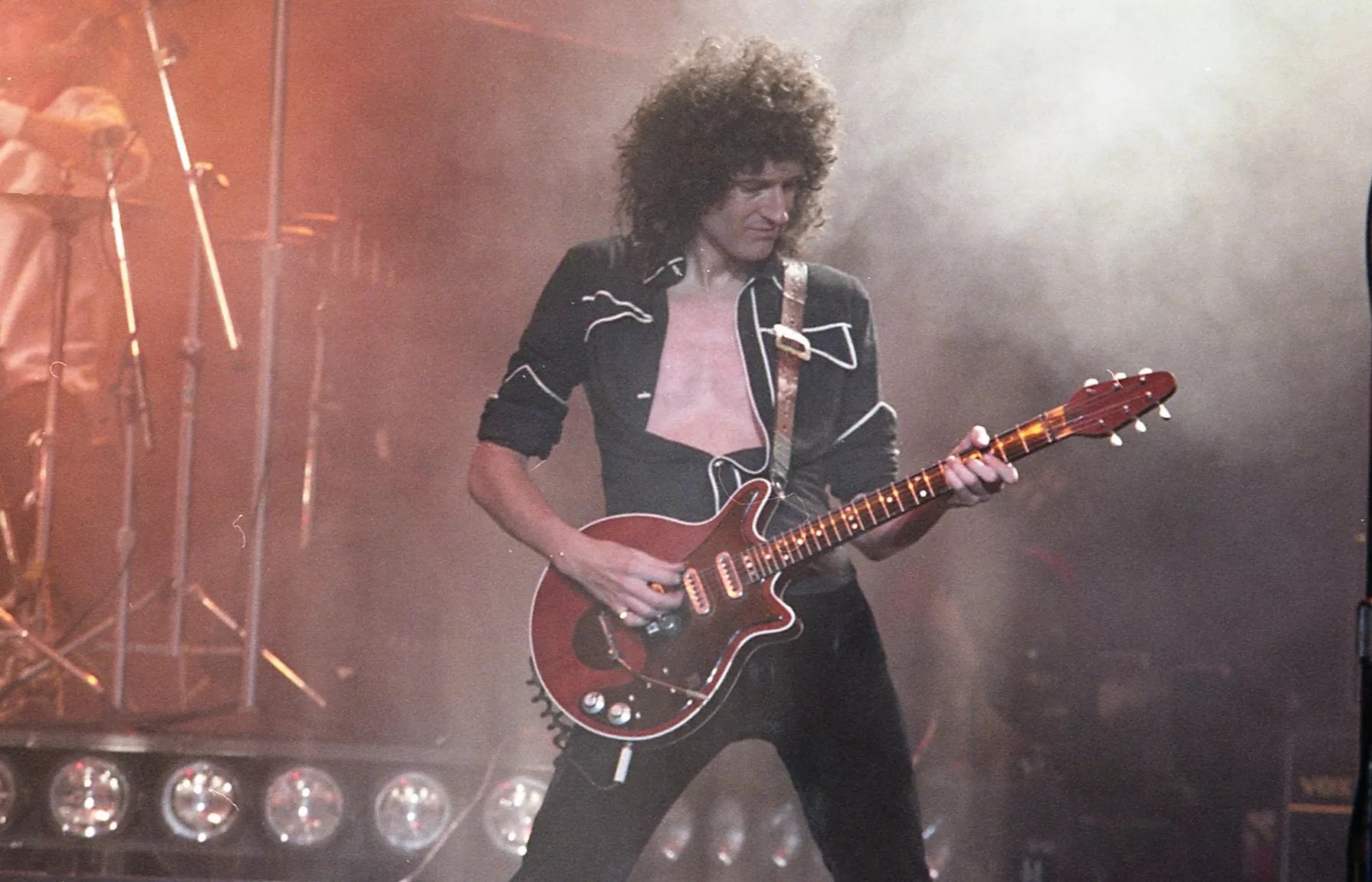
Hot Space was the last tour in the U.S.
Ben Perea

The show was Queen’s second and final performance in Colorado.
Ben Perea
Queen Uncovered: Denver’s Untold Moments in Rock History runs Sunday, May 25, through Sunday, June 15, at D’art Gallery, 900 Santa Fe Drive. There will be a reception with Ben Perea from noon to 5 p.m. Saturday, May 31.